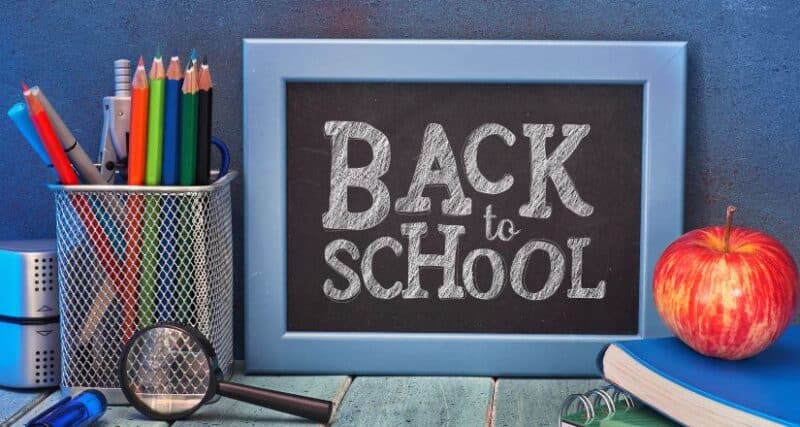The August Mindset: Some Back to the Classroom Resolutions
It’s August. For many people across the U.S., it’s a fun month when they take a vacation, go camping or head to the beach. For teachers, it means preparing for the upcoming school year or actually starting the school year. It’s a time when we start setting up our classrooms, preparing unit and lesson plans, engaging in professional development sessions, etc. I just spent the day attempting to re-organize my book closet (from which everything had been removed so it could be painted) and struggling with seating arrangements in my tiny classroom. Overall, it’s a pretty overwhelming month for us. My hope is that the resources below may help in the important work we must complete in the few days left before school starts again.
The resources below offer specific activities and strategies we can use right away; they can help as we get to the nitty-gritty of planning our lessons and organizing our classrooms. Again, I relied on my tribe of teacher friends for these recommendations, not Amazon reviews or “best of” lists. I divided them into themes as best I could; some are geared towards elementary and some secondary.
As you look at this list and investigate some of these resources, I offer one suggestion: don’t plan to do too many new things this year. This was a trap I often fell into as a young teacher. I wanted to be so AMAZING and impress my administrators. I thought that meant trying LOTS of innovative, new things ALL THE TIME. Sure, by doing this I sometimes stumbled upon some strategy or piece of technology that worked well, but mostly what it did was burn me out. Now starting my 17th year of teaching, I just try to do a maximum of 5 NEW THINGS each year. My motto is, “if you can’t count them on just one hand, it’s too many.” These “new things” could be as simple as a new bulletin board or piece of technology, or as complex as a new unit. Take things slow and keep track of which new things make the biggest impact on your students’ engagement and achievement.
Keep up the good work and never doubt how important this work is, my friends. Now back to my book closet…
Your Teacher Friend,
Megan
MATH
Math Work Stations by Debbie Diller
This book from veteran teacher Diller focuses on how to set-up and manage math work stations throughout the school year with lots of practical activities for grades K-2. Diller’s books came highly recommended by two of my elementary teacher friends.
Number Sense Routines by Jessica Shumway
There are actually two versions of this book, one for K-2 and one for grades 3-5. The goal of both books is to help teachers create daily routines that deepen children’s understanding of mathematical concepts.
LANGUAGE ARTS
The Reading Strategies Book and The Writing Strategies Book by Jennifer Serravallo
Both of these books are packed with hundreds of strategies for meeting your reading and writing goals with elementary students. These strategies can be used with multiple reading and writing approaches including reading/writing workshop and guided reading groups.
Literacy Work Stations by Debbie Diller
This book focuses on how to set-up and manage literacy work stations throughout the school year, with a focus on differentiation to meet all students’ needs. All activities are for grades K-3.
I Read It But I Don’t Get It by Cris Tovani
I read this book years ago and still use Tovani’s suggestions on a regular basis in my classroom. The book is filled with simple strategies that middle and high schoolers can use to improve their reading comprehension.
Write Beside Them & Book Love by Penny Kittle
In Write Beside Them, Kittle picks up where Nancie Atwell left off and digs into how to structure and facilitate writing workshops to improve student writing. In Book Love, Kittle gives an impassioned plea for a rethinking of Language Arts curriculum to include more independent reading. She also offers tips to manage independent reading and move all students forward in their reading skills. Both books are geared toward upper elementary through secondary.
CLASSROOM ORGANIZATION & MANAGEMENT
The First Days of School by Harry K. Wong and Rosemary T. Wong
This book is a good resource for new teachers, as it simply and clearly explains how to start the year off strong by organizing the classroom effectively, teaching students school routines and classroom procedures, and building relationships from the start. Some of the suggestions here (especially with regard to classroom management) are a bit “old school,” but many are practical and could be adapted to any classroom at any grade level.
Teaching with Love & Logic by Jim Fay and David Funk
This is an oldie but goodie. The Love and Logic approach to classroom management focuses on preventing bad behavior before it starts and shares many of the same principles as the Positive Behavior Support (PBS) approach. This book offers lots of straightforward suggestions for managing behavior in a proactive and positive way.
The Together Teacher by Maia Heyck-Merlin
This book is for any teacher who wants to better organize their classroom and their life. Heyck-Merlin provides great resources from to-do lists to calendars that teachers can use right away. She also offers workshops to dig further into the ideas presented in the book. I know a few teachers who use her strategies to help maintain a work-life balance that I’m envious of.
Rick Morris “Final Talk” & Rick Morris TV
This resource is a bit different since it’s a series of YouTube videos rather than a book. Morris is a veteran elementary school teacher from California who spent years developing strategies for creating a positive classroom environment where students are encouraged to be independent. I stumbled upon his work while listening to a podcast by The Bedley Brothers (highly recommended!).





